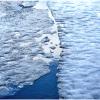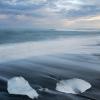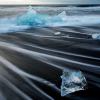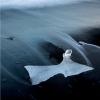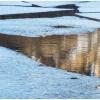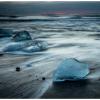
There are other photographs with ice on this site, but they are largely landscapes with Ice as one component. Here the intent is to focus-sometimes closely-on the ice itself. The beach ice is all from Iceland, unsurprisingly; much of it from the black-sand beaches at or close to Jokulsarlon. Likewise, the photographs of ice-caves were made in southern Iceland.
The lake ice and icicles are all from northern Norway; I haven't provided locations since the ice is by nature transient and its going to be impossible to take these photographs again; though if you visit Norway north of the arctic circle in the winter or spring, you probably won't be short of icy lakes. If you can time a visit for when the lake ice is beginning to melt, you'll be spoiled for choice, since the road s will be much easier to drive on for those of us without lots of winter driving experience, and you'll be able to see where you can stop. Besides, a bit of melt makes for more interesting photographs in my view, and an ice-lake in midwinter isn't much to look at especially with a covering of featureless snow.
The beach-ice photographs are challenging to make. You're right at the water's edge, trying to judge exposure time and the exact moment of shutter release to gain the effects you want. Compositions change by the second as the tide alters the position of the ice you're trying to photograph. You'll inevitably be working on a tripod to get fairly long exposure, and need to concentrate on what's happening in the finder and making positional changes very frequently, and wiping spray from the front of your lens/filters very often. You need to hold onto the tripod at all times as either a wave or a block of ice can easily knock it over which would probably mean goodbye to that equipment. All of which means that you might well miss a bigger wave or fail to see a big block of ice that bumps into you. If you're close enough to get good pictures you will get wet, despite wellies and waterproofs, and the water's cold. Fortunately the hotels round here tend to have drying rooms. It takes a while to get into the swing of things, learn what exposure times will today give you the photographs you want. I always allow time for several sessions at different times of day, and so you can capitalise on yesterday's learning.

















